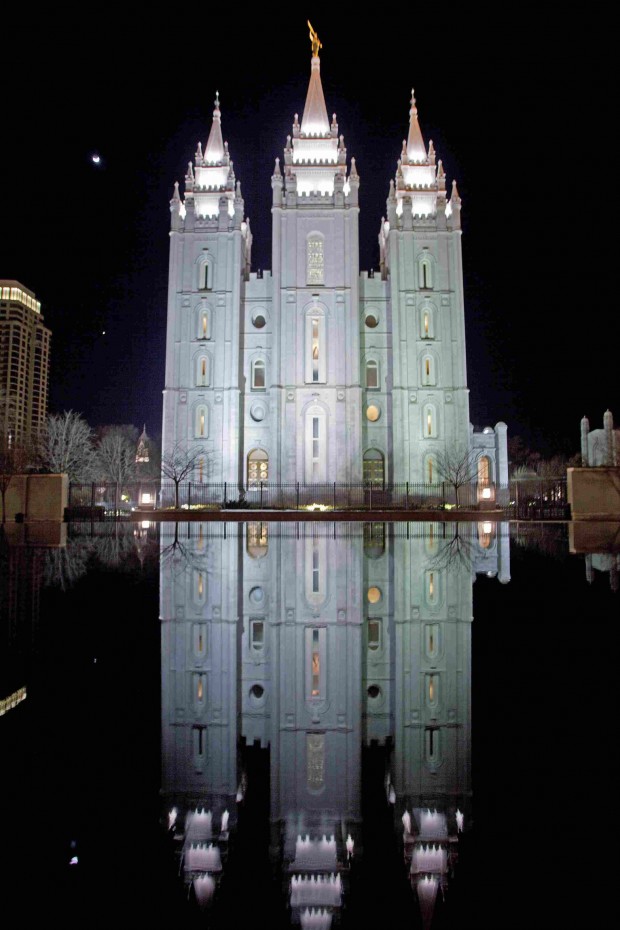OREM, Utah (CNS) — More than 1,000 students at the Orem Institute of Religion at Utah Valley University packed a lecture hall Sept. 18 to hear Bishop John C. Wester of Salt Lake City speak about the Catholic faith.
Bishop Wester’s visit was at the behest of the university’s LDS Student Association Interfaith Committee, which was formed this year.
“One of the purposes of the Interfaith Committee is to form those bridges between religions and let the students come and learn more about those religions because there is a lot of ignorance when it comes to other faiths,” said Spencer Bennett, co-chairman. “This is a way that we can come together and to ask questions that we’ve had and to learn about them.”
(See a related story on the LDS Church and how its beliefs compare to the Catholic Church.)
In addition to students and faculty members, the event was attended by dignitaries of the Church of Jesus Christ of Latter-day Saints, including Elder L. Whitney Clayton of the First Quorum of Seventy and Elder Steven J. Lund, a regional LDS leader.
[hotblock]
Bishop Wester opened his remarks by saying that the gathering of students and Elder Clayton’s presence “are wonderful signs of our ongoing collaboration and friendship and mutual desire to stand shoulder to shoulder as we give witness to Jesus Christ as his disciples.”
This hasn’t always been so, Bishop Wester said, pointing out that religious conflicts are ongoing in many parts of today’s world, so interfaith gatherings are important. “I believe that what we’re doing today is to help us be open to the different ways in which God acts in our lives in our different religions, and to see the ways that we can work together,” he said.
Acknowledging the difficulty of summarizing the Catholic faith in less than an hour, Bishop Wester outlined several key aspects of the faith, then touched on some differences between the Catholic and Mormon faiths and ended with a summary of similarities between the two.
Bishop Wester started with St. Ignatius Loyola’s first principle: “We are created to be one with God forever, to give Him glory and praise.”
This, Bishop Wester said, is “the fundamental, absolute principle of our existence.”
He also discussed the paschal mystery as the center of the Catholic faith and said Jesus Christ founded the Church as the “living memory” of his salvific presence among human beings.
The sacraments “are the lifeblood of the Church,” Bishop Wester said, and Catholics believe “we have moral imperative to live what we receive” in the Eucharist.
Saints are important to Catholics because of their example and as intercessors, with Mary having a special place as the mother of God and mother of the Church, Bishop Wester said.
The foundational difference between the Catholic and LDS faiths is the doctrine of God, Bishop Wester said: Catholics believe in the Trinity.
Catholics also believe that divine revelation ended with the conclusion of the New Testament, although revelation continues to unfold in the life of the Church and its people, Bishop Wester said, adding that another difference between the faiths is that Catholics believe Christ never abandoned His Church.
Belief in infallibility and universal salvation are other points of difference, Bishop Wester said.
Despite these differences, there are areas where the two churches share common ground: belief in the Lordship of Jesus Christ, adherence to the Ten Commandments and the Beatitudes, a call to social justice and love for the poor, respect for human life and the dignity of every person made in God’s image, and the importance of family life and Christian marriage, among others, Bishop Wester said.
About 8,000 students are enrolled in the Orem Institute of Religion at Utah Valley University, said Blair Van Dyke, adviser to the Interfaith Committee. The institute offers classes on a range of subjects, including church history, Scripture, the Book of Mormon, and dating and courtship.
Van Dyke introduced Bishop Wester as “an able defender of religious liberty” and said the “Latter-day Saints and other faith traditions beyond Catholicism benefit from his articulate voice in the public square.”
PREVIOUS: Teachings on baptism, Trinity make Mormons different from Protestants
NEXT: Catholics must take action to protect religious liberty, speakers urge




Share this story